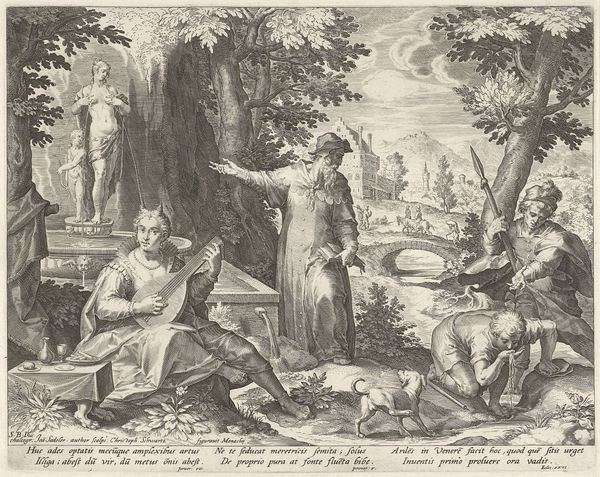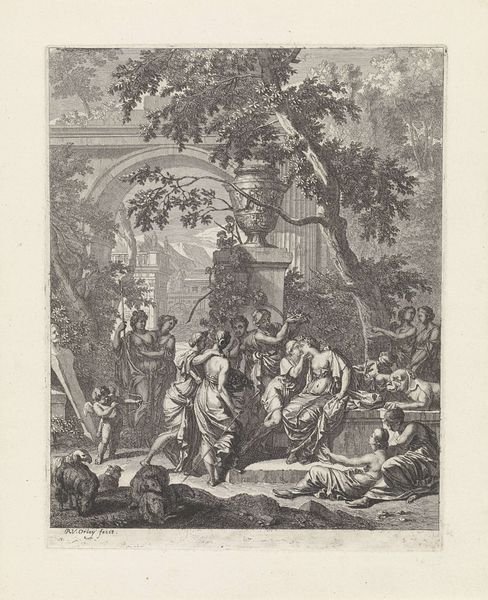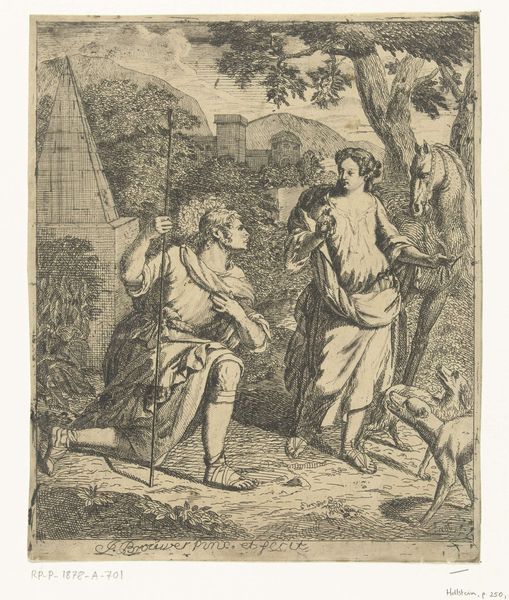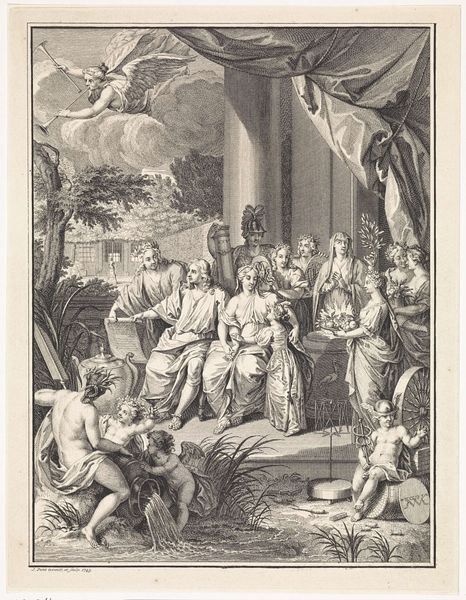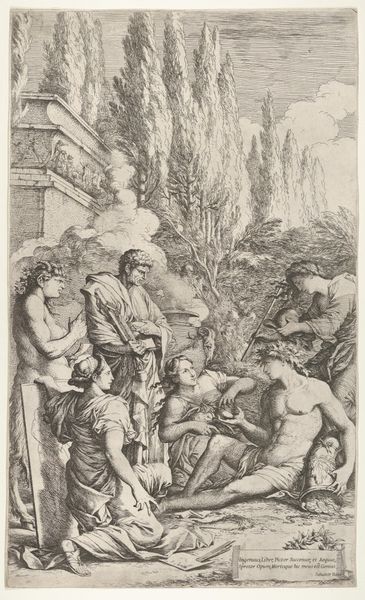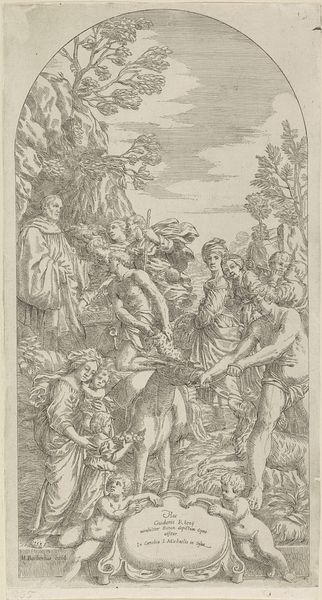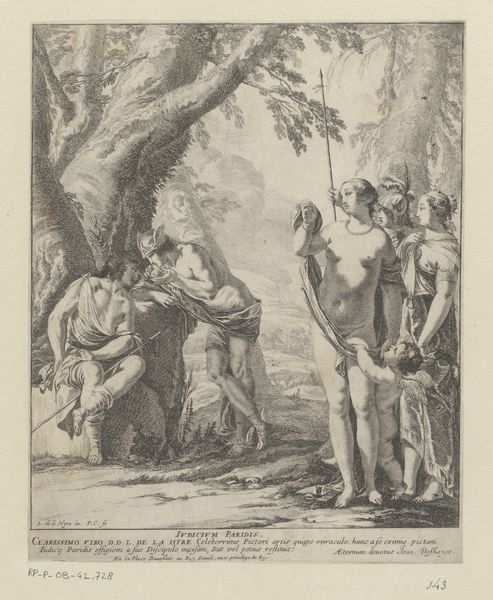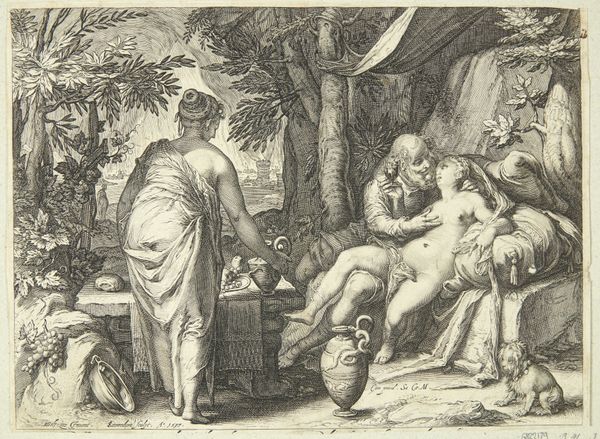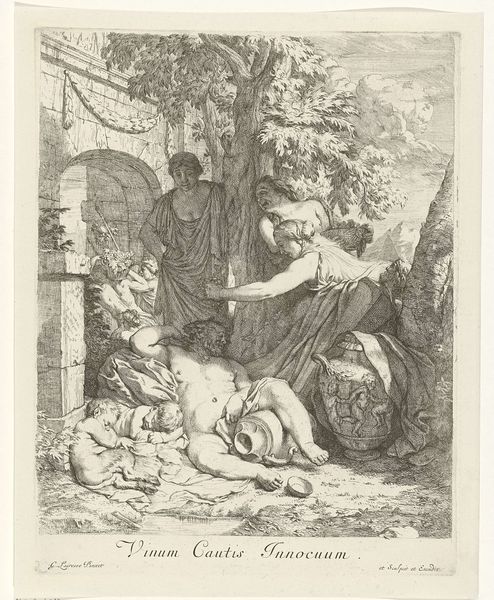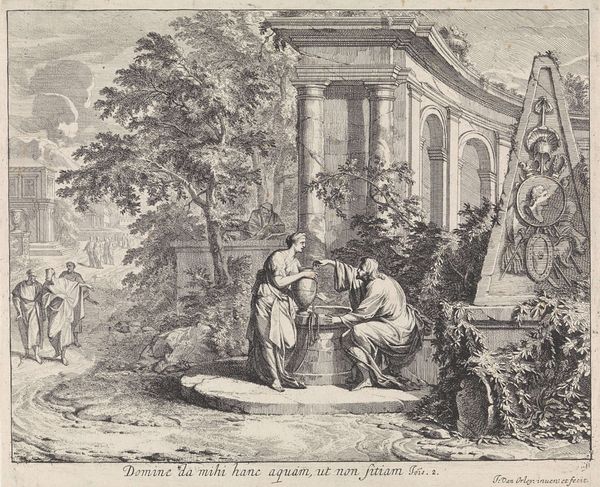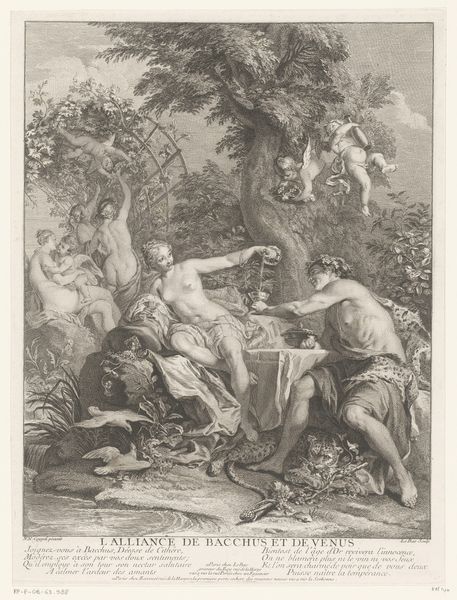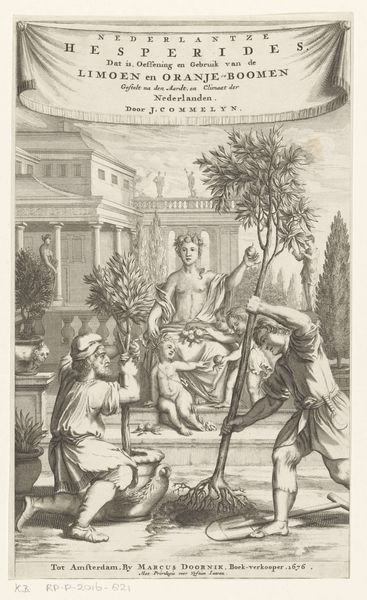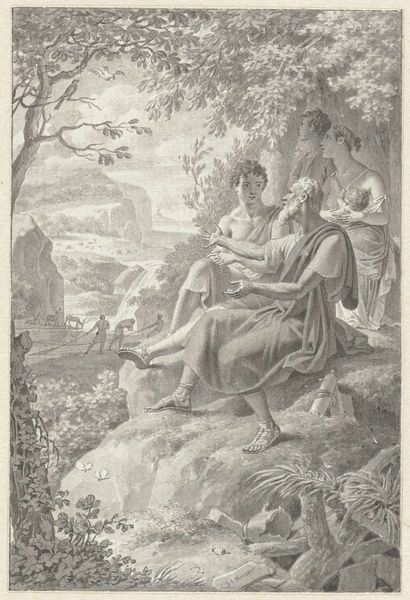
print, engraving
#
aged paper
#
narrative-art
#
baroque
# print
#
figuration
#
limited contrast and shading
#
line
#
pen work
#
history-painting
#
engraving
Dimensions: height 360 mm, width 220 mm
Copyright: Rijks Museum: Open Domain
Curator: Here we have Jacob de Later’s "Abraham ontvangt de drie engelen," an engraving from 1728 currently residing here at the Rijksmuseum. Editor: My first thought is how this piece feels almost like a stage play, everyone positioned just so beneath that imposing tree. The light and shading, though limited, creates a strong sense of depth. Curator: De Later was quite known for his prints that brought biblical stories into everyday visual culture. This engraving depicts the moment in Genesis when Abraham welcomes three strangers, unaware that they are divine messengers. It’s a visual representation of hospitality and divine promise, very potent themes during the 18th century, where religious narratives had social roles, disseminating ideologies of neighborliness. Editor: Absolutely. And I am thinking about the visual dynamics within it – look at the almost performative acts of servitude. We’ve got one figure kneeling to wash the feet of the guests, while another hurries to bring food. It almost enforces a very particular social hierarchy. How do you read this in relation to power dynamics during that time? Curator: Good point. Within a broader context, Dutch society held the values of hospitality as indicators of status and civilization. This work speaks not just about religious faith but also to socio-political virtues of that specific historical setting. Abraham's open tent reflects how a man can earn esteem within the community through beneficence and devout living. The piece also echoes values in circulation: men inhabit positions of prestige, women perform supporting roles... It’s a visualization of that era's norms and values. Editor: Indeed. And the artistic choice to depict the angels in human form is fascinating too; stripping divinity bare invites the question, "Who are we really offering hospitality to?" The mundane presentation is strikingly relatable. Curator: Exactly! It connects with viewers not through celestial otherness, but through a shared recognition of human interactions. Editor: Thinking about contemporary resonances, the act of receiving strangers remains such an imperative theme today. This visual prompts reflections on inclusion, ethics, and human connections which still remain significant in social discourses now. Curator: Well said. Viewing this print allows us to look into 18th-century understandings and allows questions about faith, interaction, and norms in that context. Editor: Ultimately, examining "Abraham ontvangt de drie engelen" gives not just artistic delight, but also stimulates social thought concerning treatment, acceptance, and human interaction then as well as currently.
Comments
No comments
Be the first to comment and join the conversation on the ultimate creative platform.
